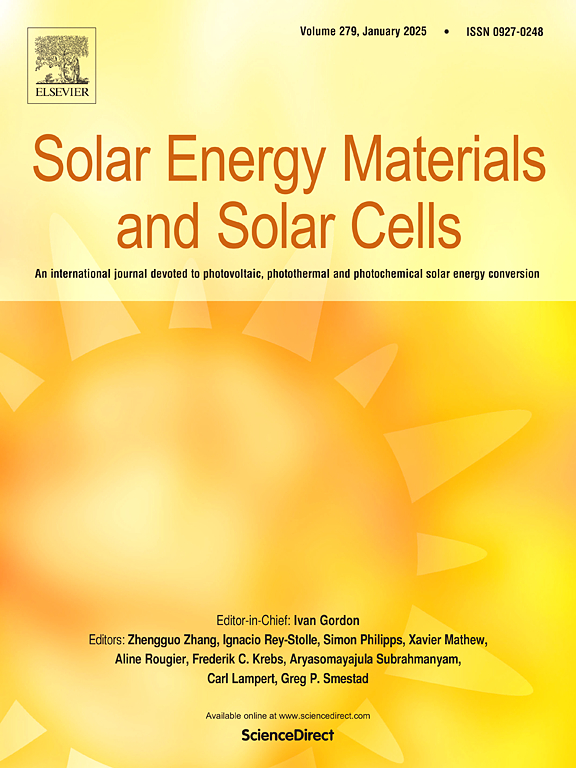Effectively synthesized plasmonic-magnetic Ag@Fe3O4 selective absorbing nanofluid for spectral beam splitting in full spectrum utilization
IF 6.3
2区 材料科学
Q2 ENERGY & FUELS
引用次数: 0
Abstract
The development of effectively selective absorbing nanofluid holds significant importance for advancing full spectrum utilization, particularly in spectral beam splitting applications. This innovative material combines the unique properties of plasmonic Ag and magnetic Fe3O4, enabling efficient energy absorption and manipulation across a wide range of wavelengths, thereby enhancing the performance of optoelectronic devices and energy harvesting systems. In this work, the prepared Ag@Fe3O4 nanoparticle was suspended in the water and ethylene glycol mixture with addition of methylene blue to form the plasmonic-magnetic nanofluid. This selective absorbing nanofluid was introduced into the photovoltaic/thermal (PV/T) systems to realize spectrum beam splitting utilization by photovoltaic conversion and photothermal conversion, respectively. The effect of methylene blue and nanoparticle concentrations on the optical properties and solar energy conversion properties was investigated. The results show the higher methylene blue and nanoparticle concentration enhances the thermal efficiency but reduces the electricity efficiency, of which the effect of nanoparticle concentration is more obvious due to the surface plasmon resonance of Ag. The splitting nanofluid with 50 ppm nanoparticle and 40 ppm methylene blue concentration had optimal function of merit at 2.11, solar energy comprehensive conversion efficiency at 78.05 %, and heat-to-electricity ratio at 7.92. Additionally, an external magnetic field was added to further enhance the solar energy comprehensive utilization efficiency by modulate the distribution behavior of plasmonic-magnetic nanoparticles. As a result, the solar energy conversion comprehensive efficiency and function of merit could be elevated to 84.70 % and 2.32 respectively under the action of magnetic field with 50 mT.
求助全文
约1分钟内获得全文
求助全文
来源期刊

Solar Energy Materials and Solar Cells
工程技术-材料科学:综合
CiteScore
12.60
自引率
11.60%
发文量
513
审稿时长
47 days
期刊介绍:
Solar Energy Materials & Solar Cells is intended as a vehicle for the dissemination of research results on materials science and technology related to photovoltaic, photothermal and photoelectrochemical solar energy conversion. Materials science is taken in the broadest possible sense and encompasses physics, chemistry, optics, materials fabrication and analysis for all types of materials.
 求助内容:
求助内容: 应助结果提醒方式:
应助结果提醒方式:


